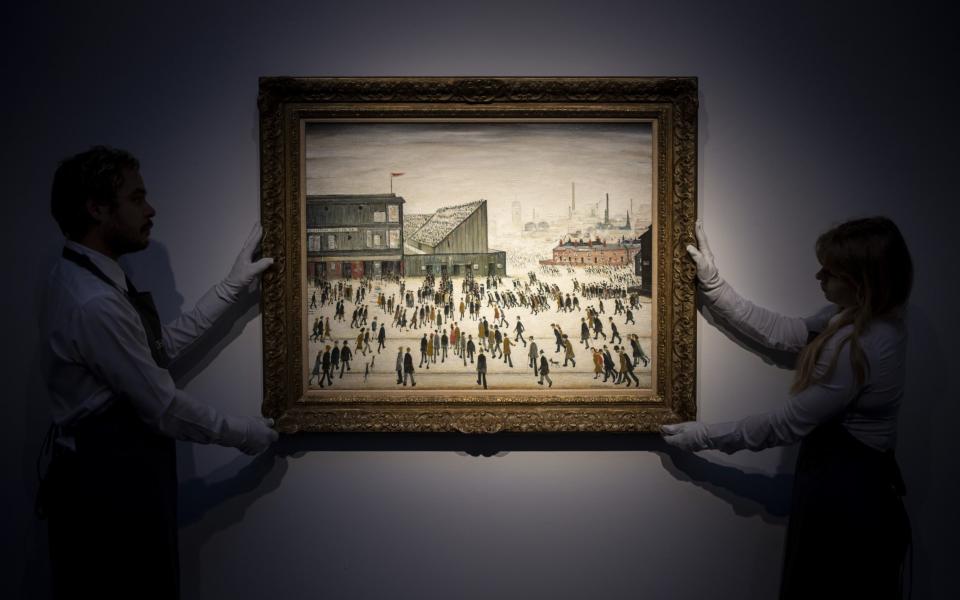Wealthy footballers urged to save £8m Lowry painting for the public

Wealthy footballers should club together to save a Lowry painting from disappearing into a private collection, Salford’s mayor has said.
Lancashire painter Lowry painted many Salford scenes during his long career, and the city’s mayor Paul Dennett has warned that his canvas "Going to the Match" could be lost to the public when the painting owned by the Professional Footballers' Association is auctioned off for charity.
Footballers in the Manchester area should intervene and buy the artwork, Mr Dennett has said, and keep the piece on public display rather than risking it vanishing into a private collection.
He said: “I’d like to make a personal plea for the footballing community here in Greater Manchester to look at retaining this painting for the people of Greater Manchester.
“There’s a lot of money in that community, so finding £8m-plus wouldn’t be too difficult.”
Mr Dennett told The Guardian: “My fear is that a work that has been publicly available at the Lowry [art gallery] for 22 years, that champions the work of one of our great artists, is potentially going to be lost from public view and public access.”
"Going to the Match" was painted in 1953 and depicts a crowd of Lowry’s typical stick-like figures walking towards Burnden Park, which was once the home of Bolton Wanderers, and not far from the artist’s home on Pendlebury.
The work won the first Football And Fine Arts competition in 1953, earning Manchester United fan Lowry £250.
Painting is valued at £8 million
In 1999 the painting emerged for sale through Christie’s, and was bought for £1.9 million by the Professional Footballers' Association (PFA), with charity head Gordon Taylor saying the work would be “our prized possession”. It has long remained on loan at the Lowry, where it has proven popular with the public.
But the work valued at £8 million is again being sold off through Christie’s, to raise money for the Players Foundation - the PFA’s charitable arm - with the Foundation saying this was "in the interests of our beneficiaries" and blaming the current financial climate.
A statement from the Foundation said: “The current financial crisis means we need all the income we can obtain, and all our assets have to function for us to ensure our ongoing work."
The charity was recently given an official warning by the Charity Commission for “failure to ensure its assets were being used in the most appropriate way”.

The owner of the Lowry art gallery in Salford, Julia Fawcett, has urged any prospective new owner of "Going to the Match" - whether a footballer or not - to do the responsible thing and ensure the piece goes on public display.
She said: “We’d like to have a conversation with the buyer [of "Going to the Match"] about the responsibility that comes with owning such a work.”
She has described the work as “more of a piece of social history than it is a painting of a football match”, adding: “It is so evocative of Lowry’s work, if you see the painting, there’s probably about a millimetre of the pitch available, the whole of the painting bar that millimetre is depicting the local communities making their way to the match, children, animals, people.”
Laurence Stephen Lowry (1887 to 1976) was known for depictions of working-class life in his native Lancashire, with his canvases often showing stick figures crossing industrial landscapes filled with chimneys and mills.
His strong association with Manchester and the surrounding area led to a £106 million art centre built in Salford in 2000 being named in his honour.

